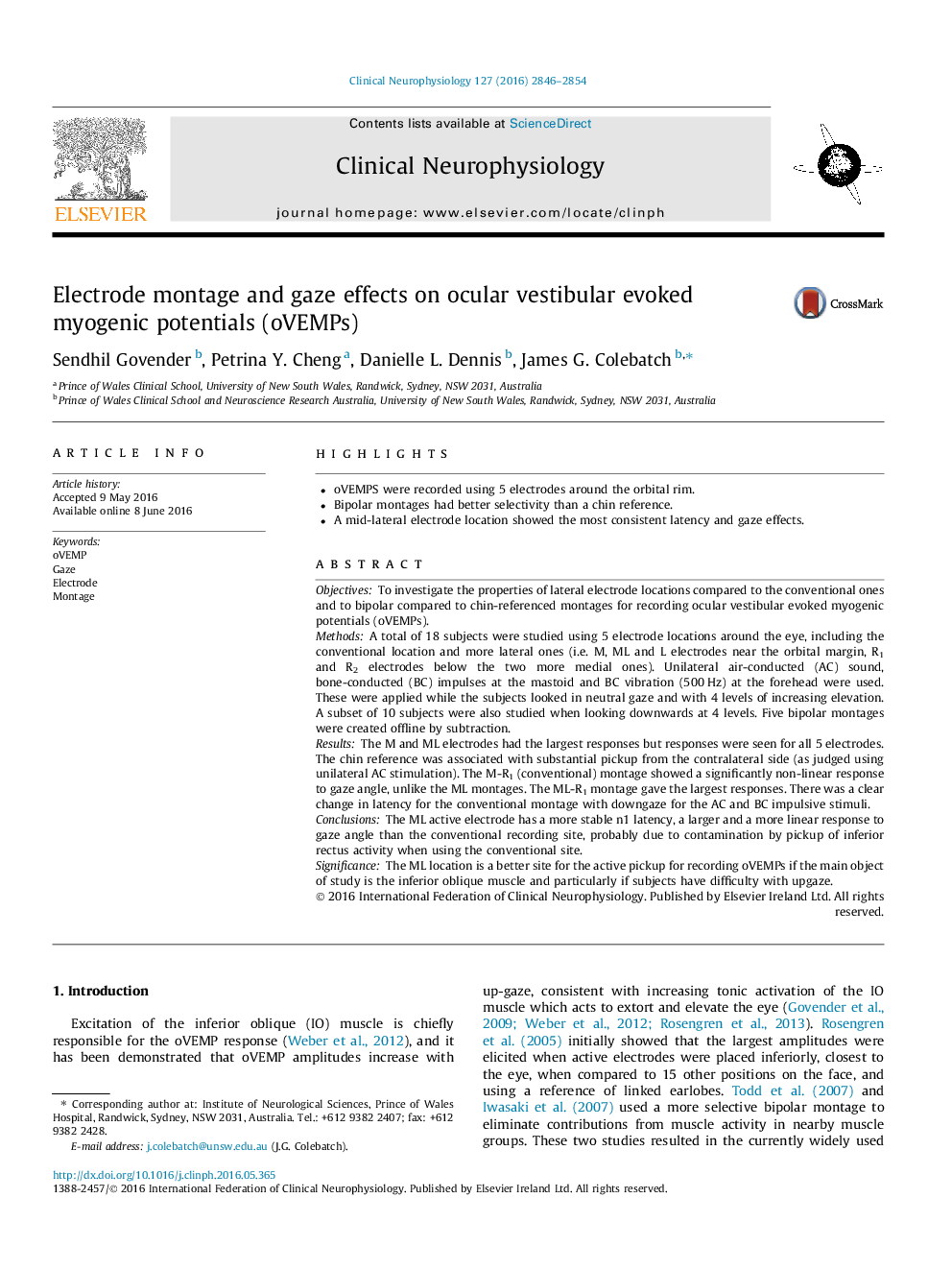| Article ID | Journal | Published Year | Pages | File Type |
|---|---|---|---|---|
| 3042667 | Clinical Neurophysiology | 2016 | 9 Pages |
•oVEMPS were recorded using 5 electrodes around the orbital rim.•Bipolar montages had better selectivity than a chin reference.•A mid-lateral electrode location showed the most consistent latency and gaze effects.
ObjectivesTo investigate the properties of lateral electrode locations compared to the conventional ones and to bipolar compared to chin-referenced montages for recording ocular vestibular evoked myogenic potentials (oVEMPs).MethodsA total of 18 subjects were studied using 5 electrode locations around the eye, including the conventional location and more lateral ones (i.e. M, ML and L electrodes near the orbital margin, R1 and R2 electrodes below the two more medial ones). Unilateral air-conducted (AC) sound, bone-conducted (BC) impulses at the mastoid and BC vibration (500 Hz) at the forehead were used. These were applied while the subjects looked in neutral gaze and with 4 levels of increasing elevation. A subset of 10 subjects were also studied when looking downwards at 4 levels. Five bipolar montages were created offline by subtraction.ResultsThe M and ML electrodes had the largest responses but responses were seen for all 5 electrodes. The chin reference was associated with substantial pickup from the contralateral side (as judged using unilateral AC stimulation). The M-R1 (conventional) montage showed a significantly non-linear response to gaze angle, unlike the ML montages. The ML-R1 montage gave the largest responses. There was a clear change in latency for the conventional montage with downgaze for the AC and BC impulsive stimuli.ConclusionsThe ML active electrode has a more stable n1 latency, a larger and a more linear response to gaze angle than the conventional recording site, probably due to contamination by pickup of inferior rectus activity when using the conventional site.SignificanceThe ML location is a better site for the active pickup for recording oVEMPs if the main object of study is the inferior oblique muscle and particularly if subjects have difficulty with upgaze.
